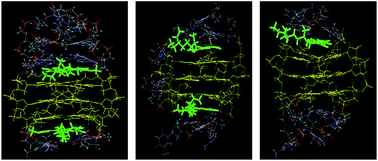Recognition of different human telomeric G-quadruplex structures is very important in anti-cancer drug design, but is challenging due to the presence of multiple conformational isomers.
Yalin Tang and fellow researchers from the Chinese Academy of Sciences have looked to tackle this problem. In their latest article, three different conformations have been recognised using quinacrine, via monitoring of absorption, fluorescence and fluorescence lifetime spectra.

Recognize three different human telomeric G-quadruplex conformations by quinacrine
Hongxia Sun, Junfeng Xiang, Qian Li, Yan Liu, Lin Li, Qian Shang, Guangzhi Xu and Yalin Tang
Analyst, 2012, Advance Article
DOI: 10.1039/C2AN15870A










